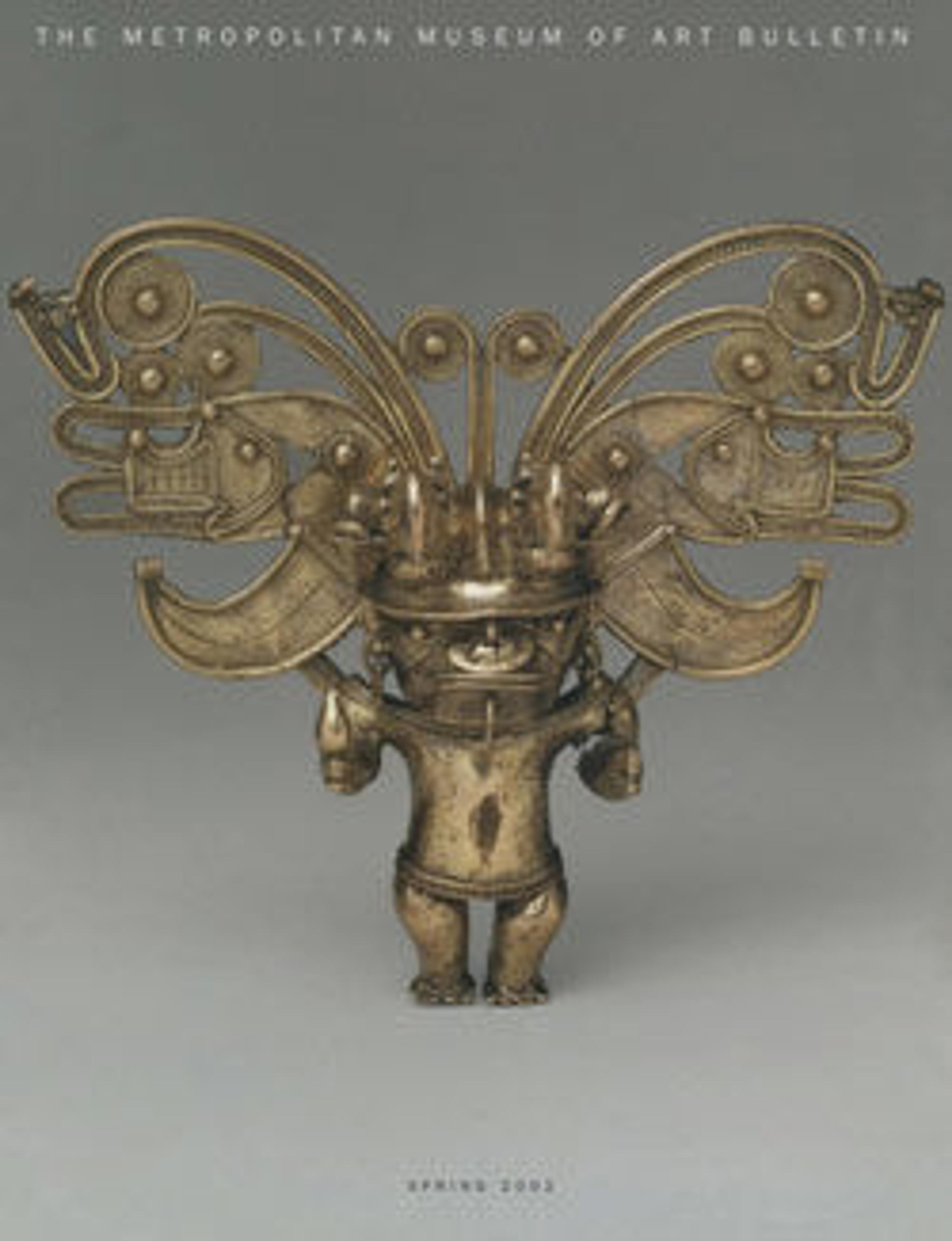Necklace with frog-shaped beads
Necklaces made of numerous small beads often in the form of animals, including shells, turtles, and frogs, are among the many types of gold ornaments worn by Aztec nobility. These creatures are all associated with water and rain and the sustenance it assures. Fertility connotations of frogs and turtles are further supported by the fact that these animals lay thousands of eggs and assume a squatting position similar to that of women in childbirth.
The ornaments were cast individually by the lost-wax process, each with its own separate clay mold which was broken after casting to release the object, explaining the slight differences in size and detail. These ornaments are said to have been found in the southern Mexico state of Chiapas.
Ancient Mexican gold objects are usually attributed to the Mixtec people, contemporaries of the Aztecs in southern Mexico. Important burials in the state of Oaxaca particularly have yielded the most impressive and technologically accomplished works in gold. The Mixtecs were renowned as the finest craftsmen in the land and perfected the art of casting from wax models. Undoubtedly their talent was much sought after by the Aztec elite. Since virtually none of the exquisite gold ornaments offered to the Spanish conquerors by the Aztecs and described by eyewitnesses survive, the distinction between Mixtec and Aztec gold objects is problematic.
The ornaments were cast individually by the lost-wax process, each with its own separate clay mold which was broken after casting to release the object, explaining the slight differences in size and detail. These ornaments are said to have been found in the southern Mexico state of Chiapas.
Ancient Mexican gold objects are usually attributed to the Mixtec people, contemporaries of the Aztecs in southern Mexico. Important burials in the state of Oaxaca particularly have yielded the most impressive and technologically accomplished works in gold. The Mixtecs were renowned as the finest craftsmen in the land and perfected the art of casting from wax models. Undoubtedly their talent was much sought after by the Aztec elite. Since virtually none of the exquisite gold ornaments offered to the Spanish conquerors by the Aztecs and described by eyewitnesses survive, the distinction between Mixtec and Aztec gold objects is problematic.
Artwork Details
- Title: Necklace with frog-shaped beads
- Artist: Mexica or Mixtec (Ñuu Savi) artists
- Date: 1400–1521 CE
- Geography: Mexico, Mesoamerica
- Culture: Mexica (Aztec)
- Medium: Gold
- Dimensions: (Dep. on mount) H. 7/8 × W. 6 × D. 5 1/2 in. (2.2 × 15.2 × 14 cm)
- Classification: Metal-Ornaments
- Credit Line: Gift of Jan Mitchell and Sons, in memory of Ellin Mitchell, 1998
- Object Number: 1998.39.1-.20
- Curatorial Department: The Michael C. Rockefeller Wing
More Artwork
Research Resources
The Met provides unparalleled resources for research and welcomes an international community of students and scholars. The Met's Open Access API is where creators and researchers can connect to the The Met collection. Open Access data and public domain images are available for unrestricted commercial and noncommercial use without permission or fee.
To request images under copyright and other restrictions, please use this Image Request form.
Feedback
We continue to research and examine historical and cultural context for objects in The Met collection. If you have comments or questions about this object record, please complete and submit this form. The Museum looks forward to receiving your comments.
